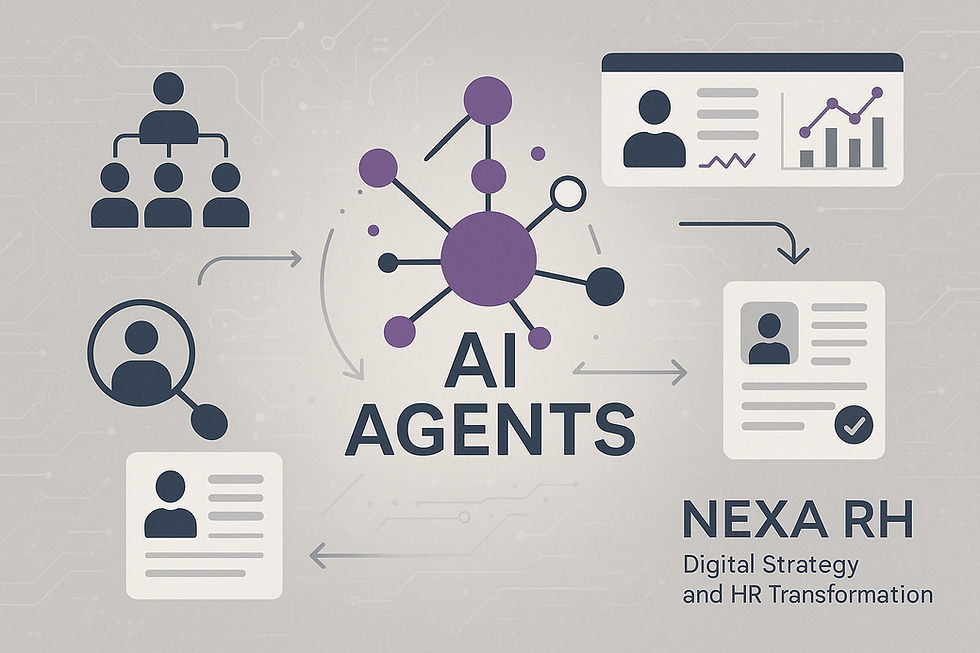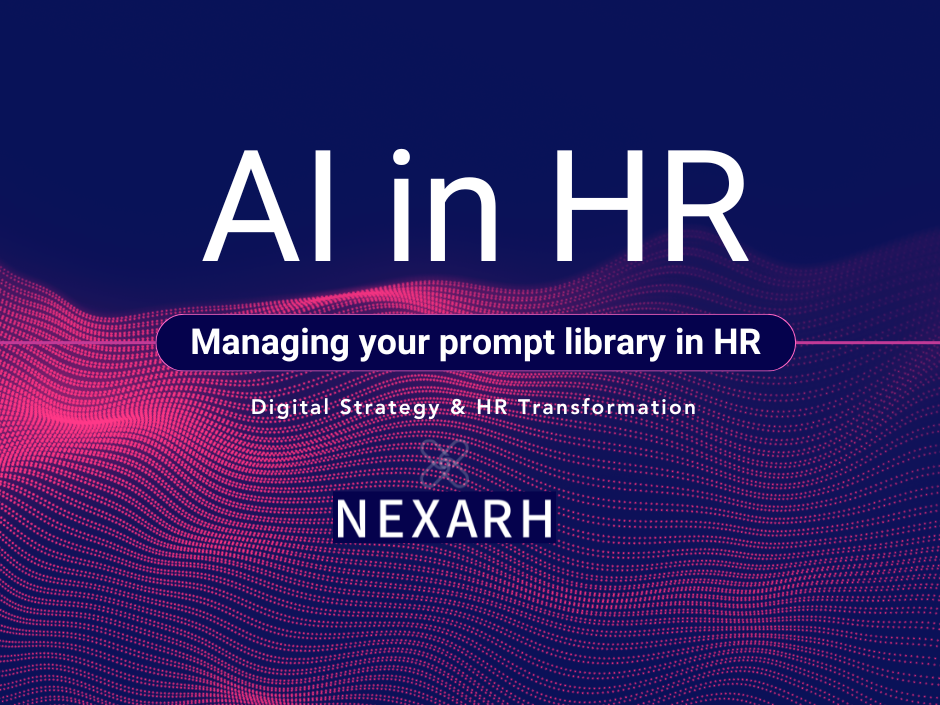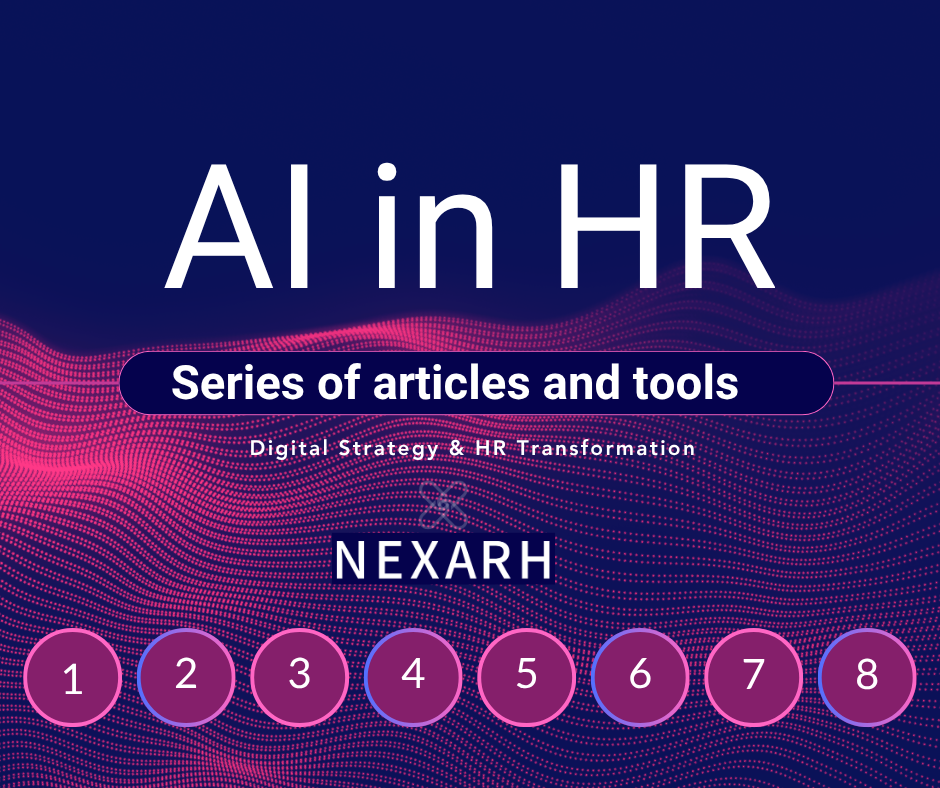AI Agents In HR Will Automate What We Know to Ask Them to Automate
- Jean-Baptiste Audrerie

- Aug 12
- 5 min read
Updated: Aug 30
Copy-pasting won't build the future of HR. AI agents will.
As HR departments accelerate their digital transformation, many remain caught in a paradox: "Shadow AI" experiments promise quick wins but never scale up.
Shadow AI is the use of consumer-grade AI solutions via personal mobile phones, such as ChatGPT 5, Claude Sonnet, or Perplexity, by employees in an organization that does not offer Generative AI solutions or refuses to do so for security reasons.
Meanwhile, repetitive tasks like copy-pasting data, reformatting reports, and following up on onboarding steps continue to consume time and energy.
AI agents are the next technological wave, and HR can greatly benefit from them.
The next step? Agentive AI: autonomous, task-oriented AI agents capable of reasoning and acting.
Unlike classic workflow automation or static ChatBots (see our previous article on the differences between ChatBots, AI Assistants, and AI Agents), AI agents execute, analyze, and adapt to your information environment.
They don't just answer questions; they perform concrete actions like scheduling appointments, copying data, extracting information, or filling out forms.
Workflows are programmed and rigid. Agents are adaptive in context. The former execute. The latter decide.
Why programmed automation is no longer enough
Many organizations have already automated certain tasks: time tracking, payroll cycles, validations.
But what about drafting job offers consistent with key competencies? Or identifying missing steps in a fragmented onboarding process? It is these invisible but high-intensity processes that are costly and hinder efficiency.
AI agents can be trained to understand context, apply business rules, and act across multiple platforms.

General Conversational Agents | AI Platforms for Vendors and Businesses | HRIS Vendor Solutions aka "Experts" or HR TECH |
Consumer Grade Individual Use | "Build from Scratch" + "Workflow Builders" Internal Custom Project | Integrated or on the side Specialized Vertical SaaS Turnkey HR Solution |
"Basic" | "Build" | "Buy" |
An accessible and adaptable conversational interface, driven by a language model trained on various internet data, where a powerful prompt is required. This is useful for various tasks, including general research, information synthesis, and text drafting, representing the type of AI that many of us are now familiar with. Companies should raise awareness and train their employees on non-secure and non-ethical uses. You have the capabilities and control, but it is not scalable if the uses are intensive. | Organizations have internal technological resources or proprietary data, trained by their own staff. These are unique and proprietary AI systems generally accessible only to the organization's key players. Low-code and no-code platforms allow non-computer scientists to create their own automation flows, including agent connectors to perform tasks. These platforms act as the essential link that connects these elements. | These AIs have been developed for specific purposes in defined domains. The intellectual property (IP) often hides the complex prompts and the underlying model. This data is documented and minimally maintained by the vendor. These AIs are very relevant because they exploit the context data in the solution but are also "caged" and "enclosed." The HR manager's responsibility in choosing and activating the AI functions is essential. It is therefore necessary to evaluate whether you really need them and if they are relevant. You have efficiency but not control. |
Targeting the right use cases: where AI agents make a difference
Not everything should be automated. But when autonomy and intelligence are combined, the results are compelling. AI agents can intervene in:
1- HR data management:
Transcription of identity documents and individual information,
Reduction of duplicates and errors from electronic forms or documents,
Updating the employee profile in the HR source of truth,
Synchronization between HR systems (HRIS, Payroll, WFM, ATS, LMS) and other solutions needing HR data.
etc.
2- Recruitment:
Automated drafting of job descriptions and job postings and distribution of offers,
Drafting of career pages,
Drafting of social media posts,
Extraction and inference of skills from candidate resumes and employee profiles,
Follow-up texts for candidates,
Introductory texts for direct approaches.
etc.
3- Onboarding of new employees:
Validation of completed steps, triggering of next actions, interdepartmental coordination.
Validation of provided evidence and automated recording in the HRIS.
Updating the new employee's profile
4- Compliance management:
Tracking due dates and collecting signatures for company documents, policies, and procedures.
Tracking and updating registrations, attendance, and enrollment in group insurance and benefits programs.
Updating employee information profiles.
Identification of regulatory changes and documentation of knowledge bases.
And many other HR areas are covered: Labour Relations, Health & Safety, Training Design, Training & Development, Skills Management, Total Rewards, Performance Management, Career and Mobility.
Read our article about 115 use cases of GEN AI in HR ➡️ https://www.nexarh.com/en/post/115-use-cases-of-gen-ai-in-hr

Choosing the right AI platform (before buying a new tool)
Should you choose an AI platform integrated into the company's system or autonomous agents? Both options exist.
Some are integrated into your existing software (your HRIS, for example). Others operate independently or serve as an orchestrator above your HR ecosystem.
The essential criteria:
Interoperability: Can the system act on your platforms (Workday, SAP SF, ADP, UKG, MS 365, MS SharePoint)?
Governance: Does it have controls for security, confidentiality, and traceability?
Extensibility: Can your HR analysts test automations without depending on IT for 6 months?
Experimenting with intention: moving from "Shadow AI" to strategic AI
Let's be frank: HR teams are already using AI informally. ChatGPT to rephrase an announcement, Excel to generate reports faster… shadow AI is everywhere.
But agentive AI requires structured, supervised, and measurable experimentation. This is where low-code/no-code platforms and HR business analysts become key.
Supervised by clear governance, they can test, learn, and deploy, without IT bottlenecks.
From task to contextual and organizational intelligence
Agentive AI will not replace HR. But it will take it to the next level. It gives them back time, reduces errors, and supports real-time decisions. From recruitment to compliance, from onboarding to data synchronization, AI agents help build an intelligent, active, and adaptive HR system.
Ready to identify your first AI use case?
Read the next article with 12 examples of vendors that have deployed their AI agents.
AI in HR: ➡️ Examples of AI agents in HR
Specify and quantify your HRIS and AI in HR strategy: write to us, schedule an appointment to discuss your needs, subscribe to our newsletter, and download one of our 2025 HRIS maps now here ➡️ https://www.nexarh.com/cartographies-hr-tech-hcm-talent







Comments